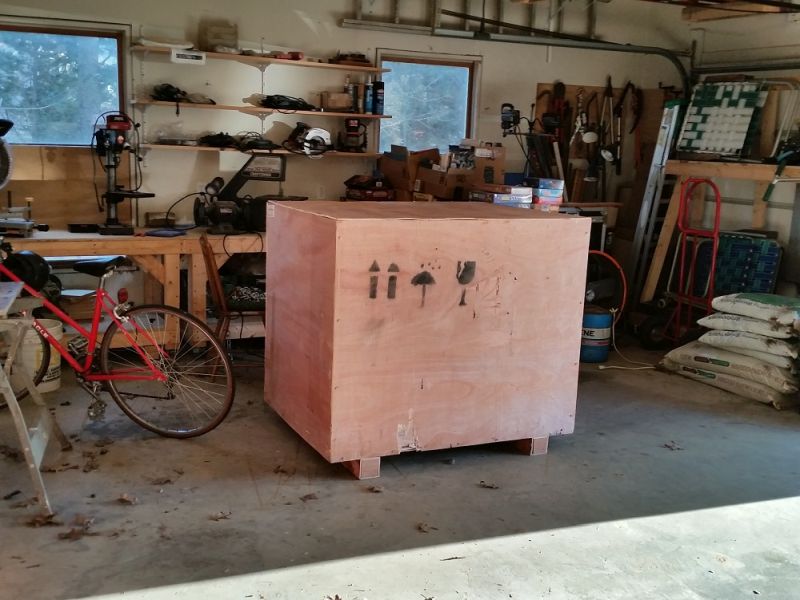Today was awesome. I thought I would have to work, but the need evaporated. And the weather: glorious! 74 degrees in mid February, in Maryland!
So I began the crate move from the garage to the basement patio. The cutter is supposed to go on the other side of that little window.
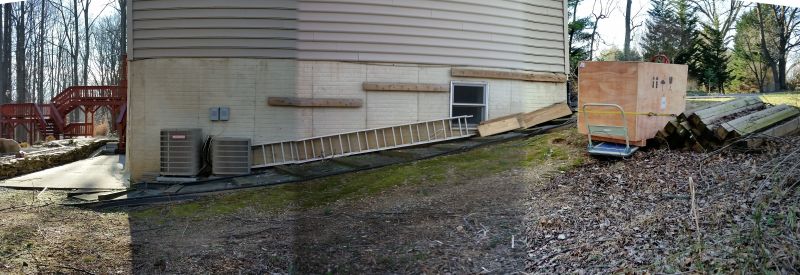
You can see why I was worried about this phase; I had late night visions of the crate rolling down onto a neighbor’s car. So I had my other neighbor’s number on speed dial should things turn dicey. But things went OK. Though the crate’s back end was free-wheeling (blocked and strapped to a dolly), the soft-ish soil turned out to be a natural brake for the cart’s small wheels. I went slowly, and gradually dragged the crate down to the patio.
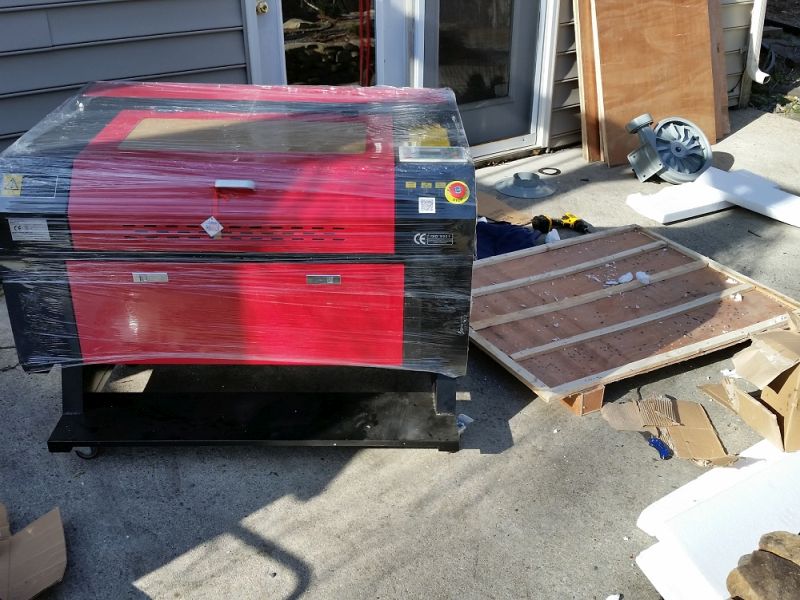
Uncrating was easy, except that they packed the fan (the gray thing in the right background) between the legs – leaving no way to get it out. So I had to partially disassemble the fan (as shown) to get it out. Then came moving the cutter. I was able to lift one end of it at a time (while pushing or pulling) to get off the crate base, and then over the door threshold.
It was a tight fit! The cutter (35" wide) was pressing on the weatherstrip to either side of this 36" nominal door.
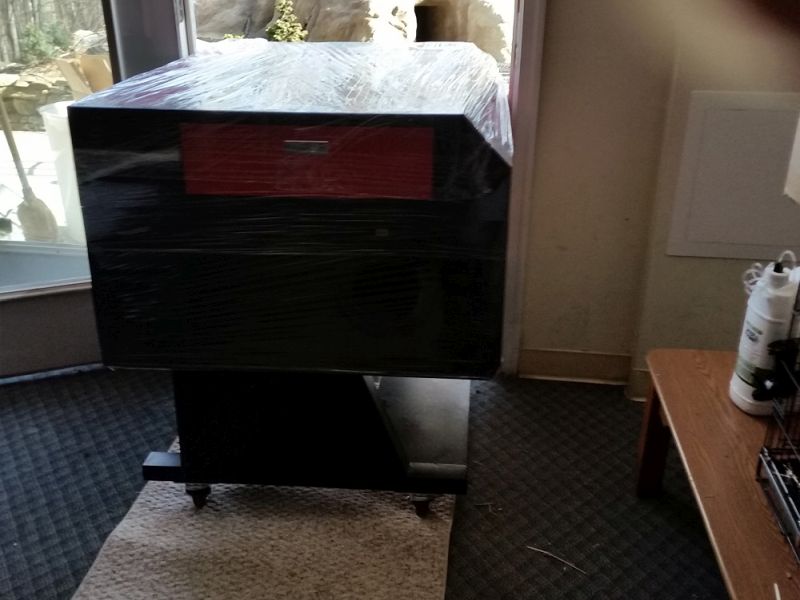
Here’s the corner it’s supposed to live in. My wife graciously donated this corner today after Plan A fell through (due to narrower doors than first thought, long story). As it turns out, this corner, being furthest from daytime activity above, is better suited in regards to equipment noise.
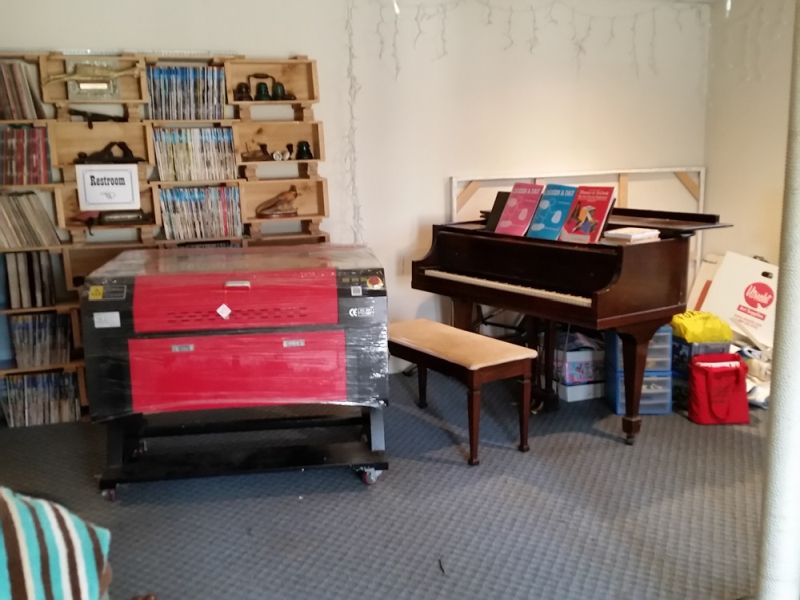
I discovered today that Maryland had its own black hole, and it was located in our basement, under the rear end of that piano. Three of my four kids have moved out; and this was the last refuge of a lot of their endless poo-poo which kept emerging from that corner. After a successful early morning and rapid haul of the beast, this enormous cow-pie required most of my day to resolve. But eventually things moved along, and the corner got cleared.
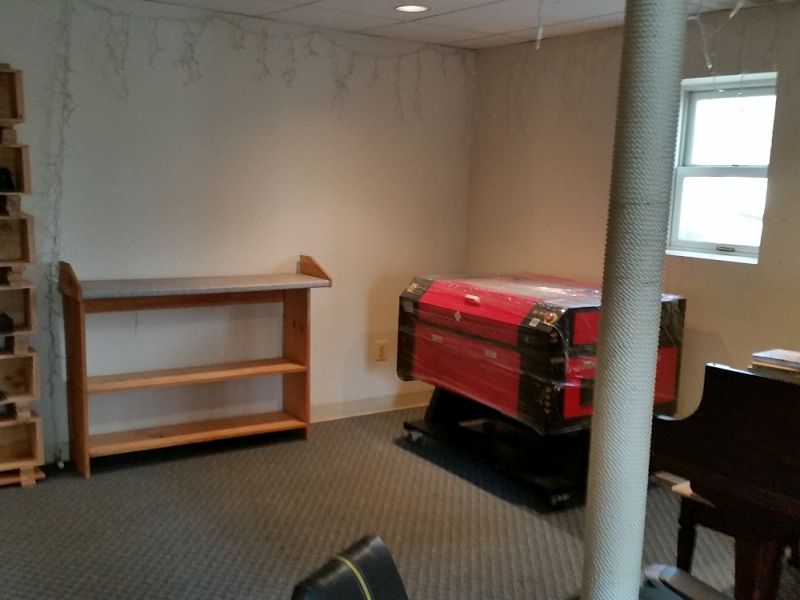
The Christmas lights around the ceiling were hung by my oldest daughter, years ago when the basement served as a rec room for the kids. So, I thought this might be a good time to plug the lights in… Kinda weird though; the phrase “Laser Chapel” definitely came to mind.
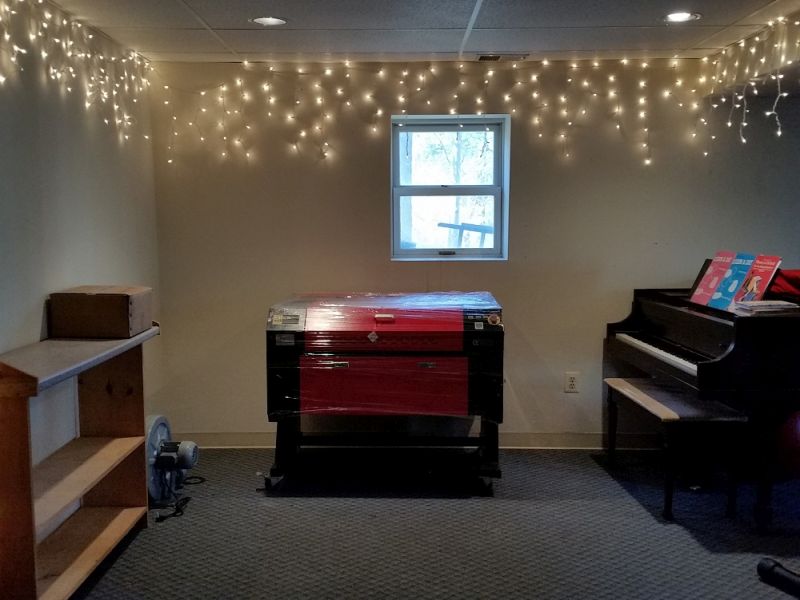
Well, that’s it for phase 1 of this install log. My back is sore, and I have a long way to go. But I’m very relieved this part is over.
===>Cliffy
[edited on 2/25 to re-insert the pics][and again on 3/26 after I accidentally blew away my photo folder]
